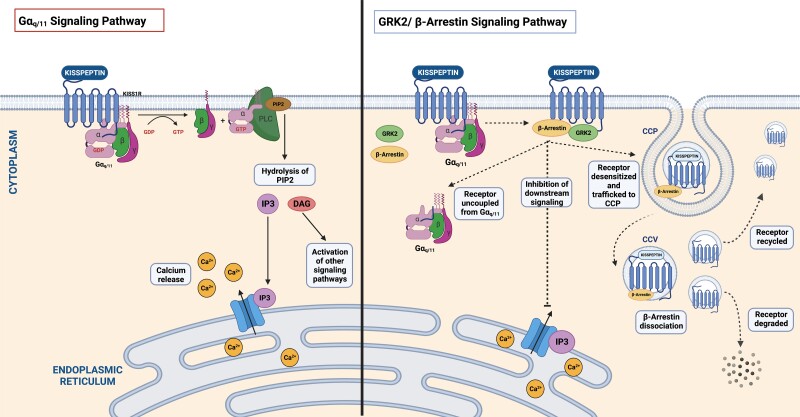Figure 3.
KP receptor induces differential responses in downstream signaling. KP has a high-affinity binding site for the human KP receptor and induces a biphasic response in downstream signaling, with an acute (lasting ∼5 minutes) and prolonged response (lasting >30 minutes). KISS1R (coupled to Gαq/11) triggers the activation of PLC and subsequent recruitment of secondary intracellular messengers, IP3 and DAG, which in turn mediate intracellular calcium release. DAG additionally activates PKC and induces downstream phosphorylation of ERK 1 and 2. Kisspeptin binding results in the recruitment of β-arrestin and GPCR serine/threonine kinases (GRK2), which leads to desensitization and internalization of the kisspeptin receptor (through uncoupling of Gαq/11). β-Arrestin traffics the desensitized KISS1R to the clathrin-coated pit resulting in sequestration, which results in β-arrestin–dependent signaling. Internalized KISS1R eventually dissociates from β-arrestin and the majority of kisspeptin receptors become resensitized and traffic back to the cell surface, thus maintaining a continuous pool of receptors at the cell surface which are ready to signal while a lesser population of KISS1R are targeted for degradation. DAG; diacylglycerol; ERK, extracellular signal-related kinase; GRK2, GPCR serine/threonine kinases; IP3, inositol triphosphate; KISS1R, kisspeptin receptor gene; KP, kisspeptin; PKC; protein kinase C; PLC, phospholipase C. Figure created with BioRender.com.

